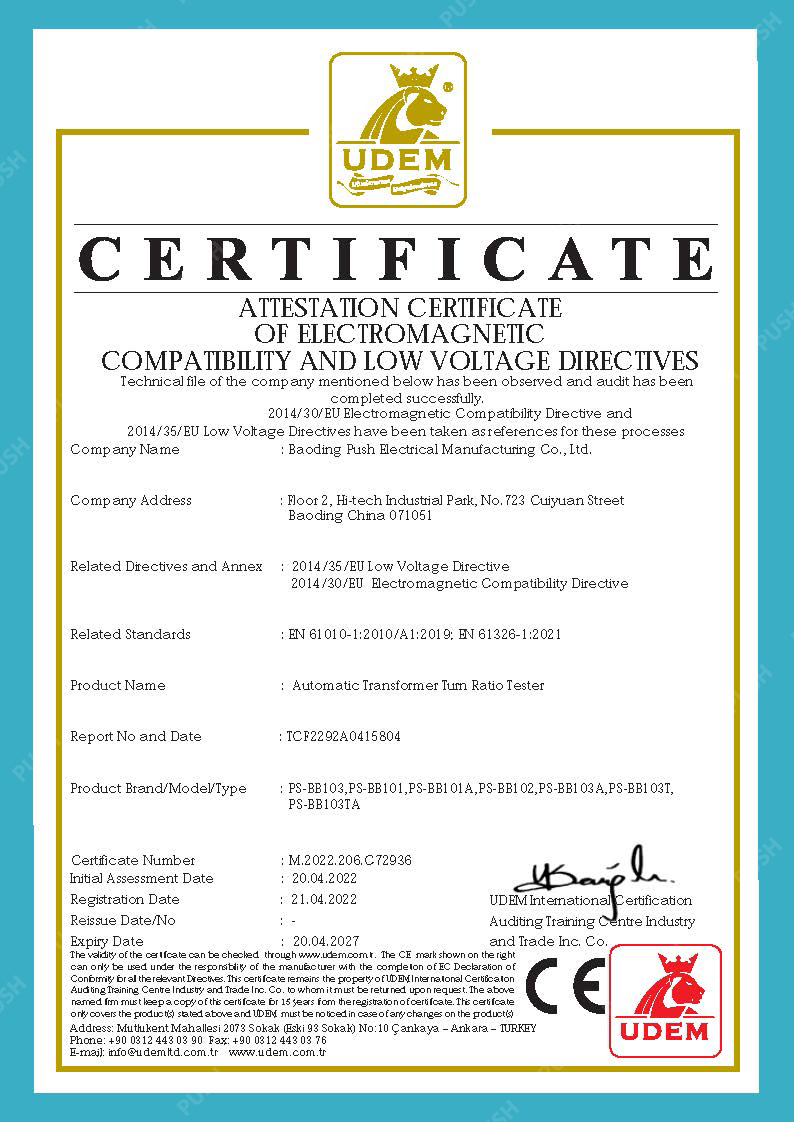 English
English


insulation resistance multimeter
Understanding Insulation Resistance Multimeters A Comprehensive Guide
In today’s industrial and residential environments, electrical safety is of paramount importance. One of the key tools used to ensure the integrity of electrical systems is the insulation resistance multimeter. This device plays a crucial role in identifying potential electrical hazards by measuring the insulation resistance of electrical wiring and components.
What is Insulation Resistance?
Insulation resistance refers to the resistance offered by insulating materials to the flow of electrical current. It indicates how effectively insulation can prevent current leakage, which can lead to short circuits, equipment damage, or even electrical shocks. A high insulation resistance value is crucial, as it signifies that the insulation is intact and functioning properly.
The Role of Insulation Resistance Multimeters
An insulation resistance multimeter, often referred to as an insulation tester, is specifically designed to measure the resistance of insulating materials. Unlike standard multimeters, which measure voltage, current, and resistance in circuits, insulation resistance multimeters generate a high DC voltage (typically between 50V and 1000V) to test the insulation. This higher voltage helps to highlight any weaknesses or breakdowns in insulation that might not be detected under lower voltage conditions.
How Insulation Resistance Testing Works
When using an insulation resistance multimeter, the tester applies a voltage to the insulation material and measures the resultant current flow. The resistance is then calculated using Ohm’s Law (R = V/I), where R is resistance, V is voltage, and I is current. A high resistance reading, usually in the megaohm range, indicates good insulation, while a low reading suggests deterioration or failure of the insulation material.
insulation resistance multimeter

Key Applications
Insulation resistance testing is widely applicable in various sectors, including
1. Electrical Utilities Regular testing helps prevent failures and enhances the reliability of power grids. 2. Manufacturing Equipment and machinery require routine checks to ensure safety and operational efficiency. 3. Construction Before a building is occupied, insulation testing is conducted to comply with safety standards. 4. Automotive Electric vehicles and systems demand thorough insulation testing to prevent malfunctions.
Choosing the Right Insulation Resistance Multimeter
When selecting an insulation resistance multimeter, several factors should be considered
- Voltage Range Ensure the meter can generate the appropriate voltage required for your specific application. - Resistance Range Look for a device that can measure high resistance values, as this is typically where issues are detected. - Ease of Use Features like dual display, data logging, and simple navigation make the testing process more efficient. - Safety Ratings Choose multimeters that adhere to safety standards, ensuring protection against electrical shocks.
Conclusion
In conclusion, insulation resistance multimeters are invaluable tools in maintaining electrical safety across various applications. By regularly testing insulation resistance, users can identify potential issues before they lead to catastrophic failures. Investing in a reliable insulation resistance multimeter not only enhances safety but also ensures compliance with industrial and regulatory standards. Whether you’re a professional in the electrical field or a DIY enthusiast, understanding and utilizing this crucial instrument can significantly impact the safety and longevity of your electrical systems.
-
Differences between open cup flash point tester and closed cup flash point testerNewsOct.31,2024
-
The Reliable Load Tap ChangerNewsOct.23,2024
-
The Essential Guide to Hipot TestersNewsOct.23,2024
-
The Digital Insulation TesterNewsOct.23,2024
-
The Best Earth Loop Impedance Tester for SaleNewsOct.23,2024
-
Tan Delta Tester--The Essential Tool for Electrical Insulation TestingNewsOct.23,2024





